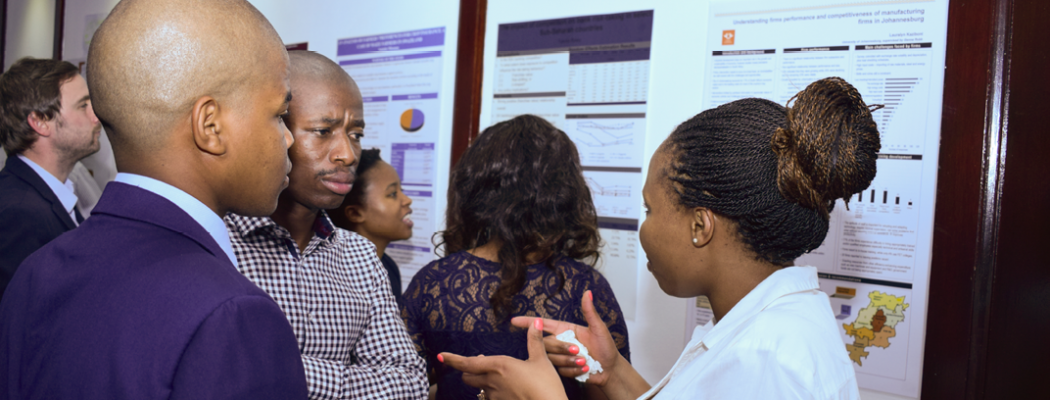COVID-19 lays bare Cape Town’s social divide, deepens underlying inequalities
The COVID-19 pandemic delivered a devastating economic shock to livelihoods across the world. In Cape Town, it has been toughest on those who had just found a way to keep their heads above water, living on the fringes of urban society.
The COVID-19 lockdown in South Africa was one of the earliest and strictest in global comparison. Despite stringent, early confinement policies implemented to reduce contagion, COVID-19 infections rapidly surged across the country. Cape Town―with its poor, densely populated townships―and the surrounding Western Cape province quickly emerged as hotspots in the early phases of the pandemic.
Together with Gauteng, the Western Cape is one of the two richest and at the same time most unequal provinces in the country. Many South Africans who came to the province in search of opportunities have been left at the fringes of society, often using informal, creative, and improvisatory economic strategies to earn a living on a day-to-day basis.
The unequal economic impact of the pandemic and associated distancing polices were acutely felt in this vulnerable segment of the labour market, as workers in the urban informal economy―without contractual security and unemployment insurance―were most affected.
In our earlier research, we revealed that provinces with large rural populations have a high share of chronically poor households, while the largest proportion of households at the edge of escaping from or falling into poverty are located in the Western Cape. Their pre-existing vulnerability has been compounded by the pandemic.
Making use of newly collected panel data from South Africa’s NIDS-CRAM survey, our latest research findings show that the profiles of those who came under economic distress since the onset of the COVID-19 pandemic differ in key respects from those who had experienced poverty previously.
While poverty has historically been substantially higher in rural compared to urban areas, this geographic gap is remarkably less pronounced in welfare outcomes measured for 2020. Importantly, respondents living in informal housing and concentrated in urban peripheral areas showed the highest incidence of financial distress since the start of the lockdown―with half of them reporting having lost their main source of income, two-thirds running out of money for food, and one-third going hungry during the initial lockdown. Moreover, while labour earnings and remittances typically shield against poverty, these income sources were at the highest risk of being lost during the crisis.
Considering these patterns, in this novel research we traced the impact of the pandemic on the livelihoods of 15 residents of Khayelitsha, a rapidly growing township on the Cape Flats, second only in size to Soweto.
Over a period of four months, between June and September 2020, we talked with them about their experiences during the initial lockdown and subsequent reopening and learned how it had impacted their economic and emotional wellbeing.
Three main results stand out.
Firstly, the decline in labour earnings and employment prospects due to the pandemic constitutes the main threat to livelihoods. The collapse of survivalist livelihood strategies during the lockdown severely deprived the poor and the vulnerable of their ability to secure a living on their own. Small business activities were suspended due to lockdown regulations leading to a fall in demand, as usual customers stayed away. One community leader we spoke to emphasized the interdependence between formal and informal sector activities, arguing that informal businesses rely on the spending of those with incomes from the formal economy. The example he used was selling snacks on trains or at stations – it is not possible if nobody is going to work. A recovery in the informal economy will thus depend on a prior recovery in the formal labour market.
Secondly, the pandemic’s initial effect on livelihoods has negatively impacted families’ ability to cope with potential future crises―which could include the second wave of COVID-19 infections from which South Africa emerged in February 2021. In the face of the first labour market shock, followed by a strong but partial and uneven recovery, more than a few households have turned to liquidating their small savings and defaulting on insurance payments. In addition, school closures and the constraints that poor children face in online teaching may deepen existing inequalities in the years to come and constrain future social upward mobility in South Africa.
Thirdly, in our communication with respondents, we noticed a worrying shift towards a more pessimistic and fatalistic attitude towards life in South Africa. There was a general sense of loss of individual control and agency brought about by the pandemic, which led to increased psychological distress. If this shift is real, its social and political consequences will remain to be seen.
In sum, our findings give rise to concerns that the COVID-19 pandemic may not only present a temporary shock but have lasting implications for poverty and inequality outcomes in South Africa. Social grants have played an indispensable role in sustaining a basic standard of living in the short-term, as other livelihood strategies were compromised by the pandemic. However, for the millions of vulnerable South Africans whose livelihoods hang in the balance, an ambitious commitment by the state to confront mid- and long-term challenges will remain imperative.
This article is extracted from a longer, more in-depth analysis. The study forms part of the SA-TIED programme, a collaborative research and policy-making initiative between the National Treasury, UNU-WIDER, IFPRI, and a host of academic and government organizations. The full paper entitled ‘The livelihood impacts of COVID-19 in urban South Africa: A view from below’ can be found here.

